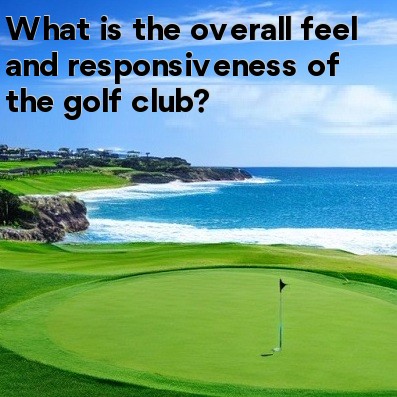
In Golf, What is the Overall Feel and Responsiveness of the Golf Club?
When it comes to playing golf, the feel and responsiveness of the golf club are crucial factors that can greatly impact your game. The overall feel of a club refers to the sensations you experience when gripping and swinging it, while responsiveness relates to how the clubface reacts upon impact with the golf ball. Let's dive deeper into these two key aspects:
The Feel of the Golf Club
- Weight: The weight of a golf club can significantly influence its feel. A heavier club may have a more powerful feel, while a lighter club can provide a sense of control and maneuverability.
- Balance: The balance of a club refers to how its weight is distributed. A well-balanced club feels comfortable throughout the swing, allowing for more consistent shots.
- Grip: The grip of a club plays a vital role in its overall feel. A properly sized grip that suits your hand size and preference can enhance your ability to control the club.
The Responsiveness of the Golf Club
- Clubhead Material: The material used in the clubhead construction affects its responsiveness. Certain materials like titanium or carbon composite can provide a more spring-like effect, boosting distance and forgiveness.
- Clubface Design: The design of the clubface, including its thickness and sweet spot placement, can impact how the club interacts with the ball upon impact. A larger sweet spot usually leads to increased forgiveness and better outcomes on off-center hits.
- Shaft Flexibility: The flexibility of the golf club's shaft can influence its responsiveness. Different players may benefit from varying levels of shaft flexibility based on their swing speed and tempo.
How Feel and Responsiveness Affect Performance
The feel and responsiveness of a golf club can have direct implications on a player's performance on the course:
- Consistency: Clubs that provide a consistent feel throughout the swing help golfers develop a more repeatable swing motion, resulting in more consistent ball-striking.
- Distance: The overall feel and responsiveness of a golf club can impact the distance you achieve. A well-balanced club with optimal flexibility and a responsive clubface can maximize power transfer, resulting in longer shots.
- Accuracy: When a golfer can feel the clubhead throughout the swing, it improves their ability to control the clubface at impact. The responsiveness of the clubface also determines the accuracy of shot placement.
- Feedback: A responsive club provides instant feedback upon impact, allowing golfers to evaluate the quality of their shots and make adjustments as needed.
Conclusion
The feel and responsiveness of a golf club are essential elements that can significantly impact your game. By understanding these factors and selecting clubs that suit your swing and preferences, you can optimize your performance on the course. Whether you prioritize consistency, distance, accuracy, or feedback, finding clubs that provide the right feel and responsiveness for you can enhance your golfing experience and help you achieve your goals.





